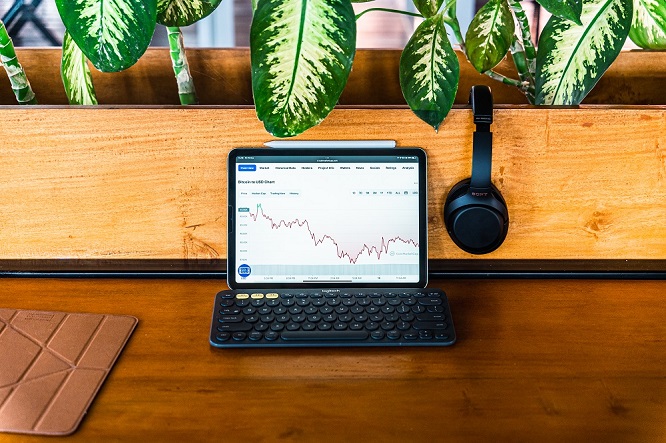What Beta Means: Everything You Need to Know About Measuring Stock Volatility
Investing is certainly not easy, and any investor should always prepare themselves for the rocky roads along the way.
With that being said, one of the biggest factors differentiating a savvy investor from a speculator is their ability to assess risk. When an investor is successful in assessing risk in the stocks that they buy or sell, they can find an ideal time to trade their stocks, improving their gains.
While there is no 100% surefire method to assess a stock's risk and value, one of the most popular and effective techniques investors can use is beta.
Yet, what is beta, and how does it work? How can investors use beta to assess a stock's risk?
In this guide, we will answer all important questions related to beta and also discuss all you need to know about measuring stock volatility. Let us begin from the basics.
What is Beta in Stock Investing?

Beta is a type of statistical measure that can be used to measure a stock's volatility in relation to the market (i.e., S&P 500) it is in or to an alternative factor.
Let's use an example to further illustrate how beta works.
Let's say we're going to use beta to compare an individual stock within the S&P 500 index. As the market, the S&P 500 index has a beta of 1.0, and there are two alternative situations for individual stocks within the index:
- An individual stock that moves more than the S&P 500 index has a beta above 1.0
- An individual stock that swings less than the market has a beta below 1.0
The basic assumption is that the higher the beta of an individual stock, the riskier it will be to own this stock. However, this high-beta stock will also have a higher return potential.
Vice versa, an individual stock with a low beta is less risky but also has a lower return ceiling.
Beta and the CAPM
Beta is actually a component of the Capital Asset Pricing Model (CAPM,) which is a model describing the relationship between systematic risk and the expected return of stocks (or other assets.)
The formula for calculating the expected return of a stock given its perceived risk with CAPM is:
ERi=Rf+βi(ERm−Rf)
Where:
ERi=expected return of investment
Rf=risk-free rate
βi= beta of the investment
(ERm−Rf)=market risk premium
The Rf (risk-free rate) is the theoretical rate of return of the stock investment when zero risk is assumed. This is typically calculated by subtracting the Treasury bond matching the stock investment's duration with the current inflation rate.
In the CAPM model, the investor is assumed to be taking additional risks to achieve higher returns, which is accounted for by the other components: beta and market risk premium.
Beta, as discussed, is the measure of how risky an individual stock is when compared to a market, while the market risk premium is the return expected from the market above the risk-free rate.
The CAPM formula is pretty accurate in evaluating whether an individual stock is currently fairly valued when compared to its expected return after considering additional risks and the time value of money.
For example, an investor is evaluating whether a stock worth $50/share is worth buying.
The stock currently pays a 2% annual dividend with a beta of 1.25 compared to S&P 500. Meaning, this individual stock is riskier than the S&P 500 index.
The risk-free rate is assumed to be at 2% and the market is expected to rise in value by 6% per year.
Using the CAPM formula ERi=Rf+βi(ERm−Rf), we can calculate the expected return of this stock:
ERi=2%+1.25% x (6%-2%)
ERi=7%
In this example, the expected return of this stock is 7%, based on the CAPM formula.
How to Calculate Beta
To reiterate, beta in stock investing is the risk (or volatility) of an individual stock when compared to the volatility of a market portfolio (or the entire stock market.)
The beta of individual stocks is widely available, so you may not need to calculate a stock's beta on your own.
Yet, if you do need to calculate beta, you can follow this step-by-step guide.
Step 1: identify the risk-free rate (Rf)
For investments in U.S. dollars, then the current rate of return of the U.S. Treasury Bills is the risk-free rate. If you are in other locations, you can find comparable investment rates that can be considered the risk-free rate.
The risk-free rate is typically expressed as a percentage.
Step 2: Determine the stock's rate of return and the compared market's rate of return
For example, if you are looking to calculate the beta of an individual stock within the S&P 500 market, then you can observe this individual stock's and the S&P 500's performances over several months and get the average rate of return.
For example, in three months, you've observed that the stock's rate of return is 8%, while the S&P 500 has an average rate of return of 9%.
Step 3: Subtract the risk-free rate (Rf) from the stock's rate of return
Based on the above examples, the stock's rate of return is 8%, and let's assume the risk-free rate is currently 4 %. Simply subtract 4% from 8%, and we get a 4% difference.
Step 4: Subtract the risk-free rate from the market's rate of return
Again, using the above example, the S&P 500 market has an average rate of return of 9% while the risk-free rate is again 4%, the difference would be 5%.
Step 5: Calculate beta
βi=the difference from step 4 divided by the difference from step 5
Using the above example, the beta would be 4% divided by 5%, and we get a beta of 0.8.
Since the beta is lower than 1, this individual stock is more likely to lose money while the S&P 500 market as a whole is gaining and vice versa; the stock may be gaining while the S&P market is losing (although this is a less likely scenario).
Using Beta to Evaluate a Stock's Volatility

While we can use beta to accurately compare an individual stock's performance and a market's (or index's) performance, beta does not offer a complete picture of a stock's risk profile.
Instead, the beta is focused on measuring the individual stock's volatility, and it's important to remember that volatility is not always bad. Remember that the higher the beta, not only the higher the potential risk of investing in a stock but also the potential return.
More conservative investors looking for more stable earning income may not be interested in high-beta stocks due to the higher potential risks. On the other hand, a more aggressive investor with higher risk tolerance might prefer the high-beta stocks instead.
Basic interpretation of beta
Beta can be considered as the risk an investor assumes by owning an individual stock relative to an index or the stock market as a whole.
The risk of an index like the S&P 500 or the whole market is assumed at 1.
A particular stock's beta lower than 1 means this stock is less volatile than the index to which it is currently being compared. Vice versa, a beta above 1 means this individual stock is more volatile than the index to which it's being compared.
For example, if the S&P 500 moves down by 10%, a stock with beta calculated at 0.7 will fall only 7% on average, while another stock with beta of 1.5 will fall by 15% on average.
Risk is directly proportional to return
As the old saying goes: high risk, high return. A stock with a high beta may gain more than the S&P 500 when it gains, while a stock with a low beta won't gain as much.
By understanding this principle, investors can use beta to choose individual stocks that will suit their risk profile: more conservative investors can use stocks with a lower beta, and vice versa.
To diversify your portfolio, it's also recommended to have a good mix of high-beta and low-beta stocks. However, keep in mind that low-beta stocks typically underperform the index and the overall stock market during a bull market, so you may also not experience the highest possible profits during gains.
To summarize, investors can use beta in several use cases:
- To help decide whether to invest in an individual stock
- To evaluate the fairness of the buying or selling price of a stock to determine whether it's the right time to sell or buy
- To evaluate how the addition of an individual stock will affect a market's or index's volatility
- To take advantage of a market opportunity
- To make a stock portfolio more defensive
Why You Should (and Shouldn't) Measure beta
While measuring and using beta can be useful for various purposes, it is not a perfect, one-size-fits-all answer to all your investment programs.
It's also crucial to remember that the relationship between an individual stock and the market is never perfect. Meaning, beta is never 100% accurate and will vary over time for all stocks.
With all these concerns, here are the pros and cons of utilizing beta:
Pros:
- Simple and easy to use: beta is a relatively simple concept to understand and use. The beta numbers for various individual stocks are readily available, and even when not, it's relatively easy to calculate beta.
- An objective way to manage your investment volatility: rather than relying on gut feeling and uncertainty (i.e., trying to read between the lines of a CEO statement,) beta offers an objective mathematical calculation that can help you manage the volatility of your investment portfolio.
- Sizable data to help you manage expectations: Beta calculations use a sizable chunk of data, typically representing at least 36 months (3 years) of measurement. Beta can give you a pretty good indication of whether the individual stock will move more or less than the market (index) as a percentage.
Cons:
- Numbers aren't everything: while numbers don't lie, they also won't tell you about everything that might affect a stock's performance. Beta, for example, can't measure qualitative factors like when a CEO suddenly steps down due to a sickness, which can significantly affect the future of a stock.
- More suited towards the long-term game. To ensure accuracy, it's important to measure beta over a longer period of time, ideally 36 months or longer. Using beta for short-term projections is susceptible to error. This also means you can't use beta to evaluate younger companies or companies that are currently planning for IPO.
- Doesn't paint the complete picture: Beta is, by nature, only focusing on a single thing that doesn't incorporate any other information. So, it won't give you the complete picture, and it will also regularly change as both the individual stock and the index/market move. Since beta changes over time, it should be treated only as a single element of your research and not rely completely on it.
Wrapping Up
Utilizing beta in managing your stock investment portfolio can serve a number of benefits, especially in managing your risks and expectations.
Beta represents a relatively good indication of whether an individual stock will move more or less than an index or the overall market as a percentage, which can, in turn, help you manage your portfolio's volatility and make adjustments accordingly.
A higher beta indicates higher volatility, and while it means higher potential risks relative to the market, it also means higher potential gains. Vice versa, a lower beta means less risk but also lower potential returns.
It's crucial that beta shouldn't be treated as a tool that can 100% predict the future. Beta focuses on measuring the past volatility of a stock, and while we can try to project this volatility into the future, it's not always accurate since a stock's beta can change drastically in a matter of a year or even in months.


